Everything You Need To Know About Logo Design Copyright Laws
When it comes to logo design copyright laws, not too many of us are familiar with these terms or their general way of working. It’s almost as if we’re clueless about the whole ordeal.
At the same time, there simply aren’t enough blogs present to describe logo design copyrights laws the right way. And that’s exactly why we’re making it easier for you.
Here is everything you need to know about the copyright laws related to logo design. So let’s take a look!
Unraveling the mystery behind Logo Design copyrights
What exactly is copyright?
Before we go into detail regarding copyright laws, let’s glance over what is copyright?
Copyright is a term that’s usually reserved for exclusive ownership rights. It has the power to control reproduction as well as commercial exploitation, relating to creative work.
How you get a copyright?
But why do you need copyright when it’s your work? The answer is simple. Copyright provides protection. It’s like a security cover for any kind of photographs, artwork, graphic design, as well as illustrations.
The moment you create your work, you own its copyright. It’s as simple as that.
You don’t need to get it `copyrighted` from any specific state department, however, it’s recommended that you get it trademarked. Trademark, is not the same thing as the copyright.
Trademark means you need to get your logo registered with state department so no one can copy your logo.
When your logo designer transfers the copyrights to you, you get the ownership rights of the logo.
Different types of logo designs that need protection
Before digging deep into the actual subject of logo design copyright laws, it’s so important to be familiar with the different kinds of logos that need protection. All of these logos need copyrights, trademark registration as well as design registration. I am covering the copyright aspects for you here.
Combined Mark- Subtle combination of a word with an image
When you’ve got a word combined with a logo, you need to be sure of one important thing. And that revolves around the fact that the words don’t belong to another trademark.
Device Mark- A simple image on its own
Over here, your logo consists of an image only. Let’s take the renowned Nike swoosh for example.
Stylized Mark- it consists of a simple word, without any graphics
All stylized marks need to be double-checked for the fact that their words are trademarked. The worst thing you can do is use a design that is trademarked by someone else.
Understanding the basics of copyright laws for logo design

Basics of copyright laws for logo design
From logos and drawings to pictures and graphic designs, copyright protects them all.
On the majority basis, copyrights belong to the owner or logo creator. However, cases may vary depending on hired employees or those who transfer their rights through writing.
If you think copyrights occur naturally, you probably need to think again. At the same time, copyrights are one of the most powerful tools that a logo designer has. Hence, according to ownership rules, copyrights should be registered.
While copyrights give owners a sense of security, there are several drawbacks to be mindful of. And that entails evidence of ownership as well as copying. In other words, if you think someone has copied your logo design, you need to have sufficient proof that your logo was indeed copied.
The other party can argue and begin an enduring dispute, making claims that you copied their work. Hence in these cases, evidence or proof plays a crucial role. A lot of the time, matters are taken up by the court.
So what’s the solution?
Simply get your logo copyrighted by registering it. And once this copyright ownership is secured, you’ll have full proof of the logo’s design date. And in cases of disputes, it works wonders.
A closer look at logo design copyright laws with an example

Closer look at logo design
So we’ve covered the basic definitions of copyright laws but the real question still exists. What are logo design copyright laws and where should you draw the line?
It’s so important to consider examples when analyzing copyright laws. It makes the entire concept so much more relatable.
Let’s consider for example, that you design a logotype. In short, you will be creating that logo using some other creative designer’s typeface. Now let’s assume that you have paid for the typeface’s license.
But does that mean you have the right to alter that typeface, according to your free will? Furthermore, are you liable to resell that particular typeface to another client?
Although these questions may appear daunting in the first instance, it’s not as confusing as it may seem.
While there is no particular law about copyrights of typeface designs, there are however several restrictions in place. Articles aren’t protected by copyright, except when they have several artistic features that can exist separately from the overall design.
If you have a simple variation in typographic ornamentation such as a change in lettering for example, then it can’t be copyrighted.
So what does that mean in simple terms?
If it’s only a type-based logo (without the icon), you can’t do minor editing in font and then decide on selling it forward to other clients. This is because we are using parts from a copyrighted typeface. Hence, it’s illegal to sell an edited typeface part forward to other clients for business purposes.
Why do Logo Designers need to know about copyright laws?

Logo Designers need to know about copyright laws
A modern-day designer needs to be aware of copyright laws for various reasons. Firstly, it’s common sense to know what’s happening in your surroundings. And truth be told, it’s a very competitive environment out there. As sad as it may seem, everyone wants that top spot and they’ll do anything to achieve it. If that means stealing someone else’s hard work and ideas, then so be it.
If you are a small business owner, it’s recommended to get your logo trademarked in your state to avoid future conflicts.
-

Waqas D.
Waqas D. is the co-founder of the branding and website agency, FullStop™. He supercharges brands by crafting memorable logos, brand identities and engaging websites. Besides thousands of startups and medium-size businesses, FullStop has worked with likes of Microsoft & L’Oréal. View our portfolio or get in touch.
Get a Free Quote
+1 845 3770255
Call on anytime
To discuss your project










